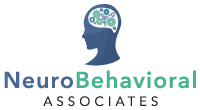Empathy is an essential part of healthy social relationships. Children who demonstrate empathy will find it easier to form strong friendships, relate to others, and effectively communicate to both other children and adults. While empathy plays a key role in socialization, many children with neuropsychological or neurodevelopmental differences struggle to display empathy. They may be too easily distracted, or have difficulty properly reading social cues and body language.(1) This is often especially true for kids with autism spectrum disorder.
The unique reactions of children with ASD to social experiences often leads others to believe that kids with this condition do not experience empathy. Of course, they absolutely do experience empathy for others, as is backed by large bodies of research.(1) However, neurodivergent children are more likely to need help reading other people’s emotions.
Here are a few tips for cultivating empathy in your child:
Model Empathy Yourself
As the saying goes, you are your child’s first and most influential teacher. Help your child to connect with the concept of empathy by demonstrating moments of empathy yourself.(1) How can you do this? One of the easiest and earliest ways is to express empathy for your child.
For example, when your toddling baby falls down, say something like, “I can tell that hurt and now you’re feeling sad. Let me give you a hug.” This seems like an ordinary, simple response, but many parents — often in a misguided attempt to keep the child from crying — tell children to brush off their emotions, or affirm that they’re okay, without acknowledging the experience that just occurred.
Another way to demonstrate empathy in front of your child is by paying close attention to how you talk with and about other people.(1) For instance, if a classmate of your child’s is happily running into school, you might say to your child, “Wow, it looks like Sally is feeling happy today. She had the biggest smile on her face and ran right inside. I’m so glad that she’s happy today. Are you happy?”
The more that your child sees you model empathy, the more that your child will begin to understand how they, too, can express similar feelings.
Label Emotions and Body Language for Your Child
As in the example of a child happily running into school, you can point out the body language and facial expressions of others when talking to your child. For instance, you might say, “Billy has his arms crossed. I wonder if he feels mad.”
When your child is demonstrating feelings of their own, offer labels and descriptions for those feelings. If your child is screaming, for instance, you could say, “It seems like you are feeling angry.” When your child tosses aside their school books during virtual learning, you might ask, “I wonder if you are feeling frustrated?” Another helpful tactic is to tie the child’s experiences to your own experiences.(1) For example, try saying something like, “I know how scared I feel when things don’t go the way that I wanted. Do you feel scared, too?” Slowly, your child will begin to understand the connection between feeling words, emotions, expressions, and empathy.
Use Flash Cards, Stories, Games, and Other Tools to Foster Empathy
Many parents of neurodivergent children find visuals to be extremely helpful, especially when it comes to teaching a concept like empathy. Empathy flashcards can teach your child to recognize common emotions. You can also use social games, social stories, and even role playing at home to help your child learn to recognize and express empathy.(1)
The Benefits of Empathy in the Classroom
Research into the effects of empathy in the classroom shows that when students and teachers are able to express empathy, the students demonstrate a higher level of classroom engagement, stronger academic scores, better relationships, and less bullying (2) than in classrooms where empathy is not a part of the classroom’s culture.
Teachers, like parents, should model empathy to their students. They should also take care to teach and demonstrate ethics, anti-bullying practices,and fairness, as well as proper ways to manage classroom disagreements.(2)
Schedule an Appointment with NeuroBehavioral Associates
NeuroBehavioral Associates has remained open during the COVID-19 pandemic. We are employing low-contact testing strategies, social distancing, and telehealth tools during our in-office appointments.
Contact us today for more information on our services and therapies, or to schedule an appointment for a comprehensive neuropsychological assessment. Our assessments address known or suspected learning, cognitive, or neurodevelopmental differences in children and adults of all ages.
References:
- Kelly, K. (2020, October 22). 8 Ways to Teach Empathy to Your Child. Retrieved January 01, 2021, from https://www.understood.org/en/friends-feelings/common-challenges/picking-up-on-social-cues/teaching-empathy-activities
- Ditkowsky, A. (2018, November 01). How to Build Empathy and Strengthen Your School Community. Retrieved January 01, 2021, from https://mcc.gse.harvard.edu/resources-for-educators/how-build-empathy-strengthen-school-community






